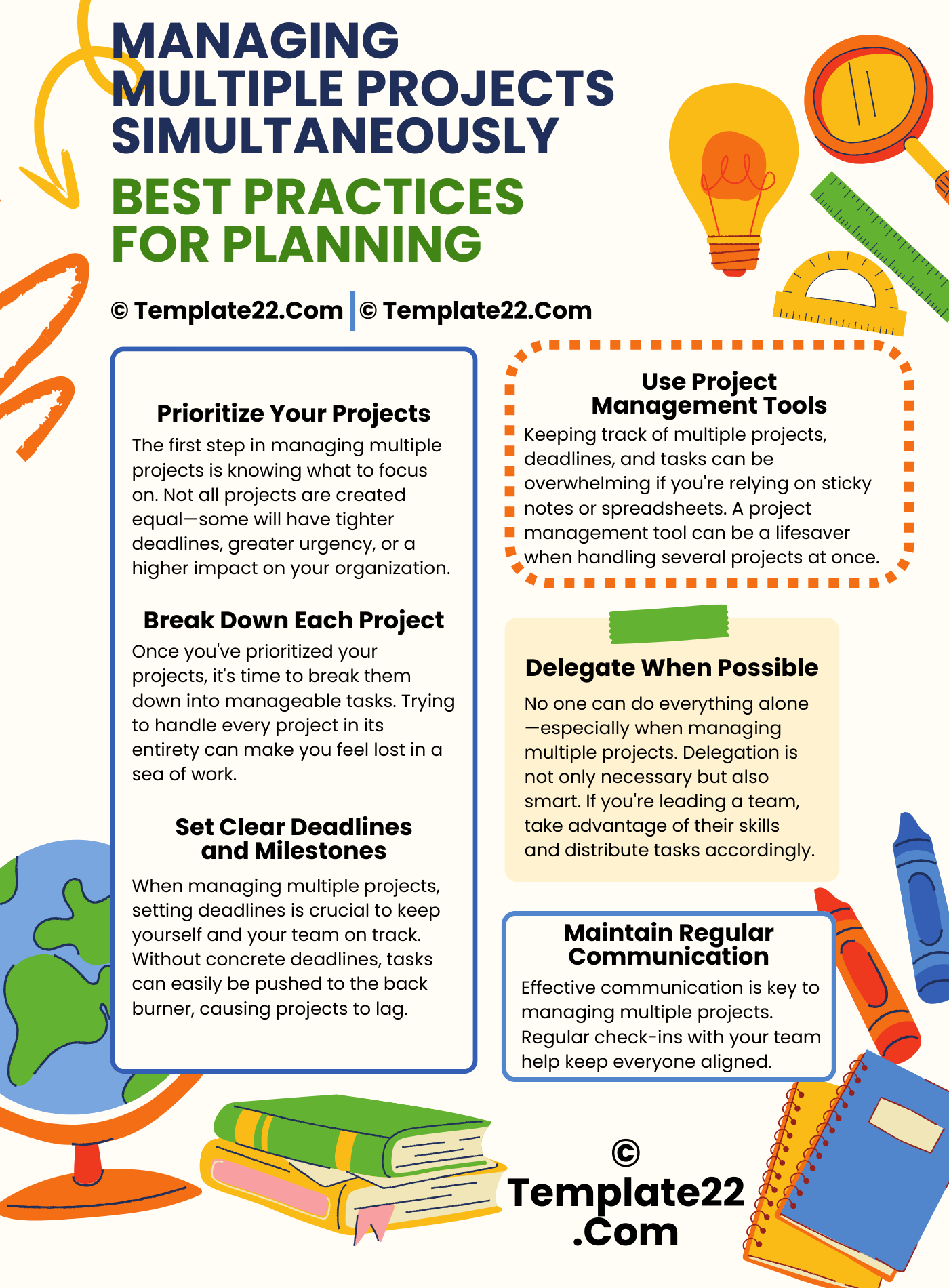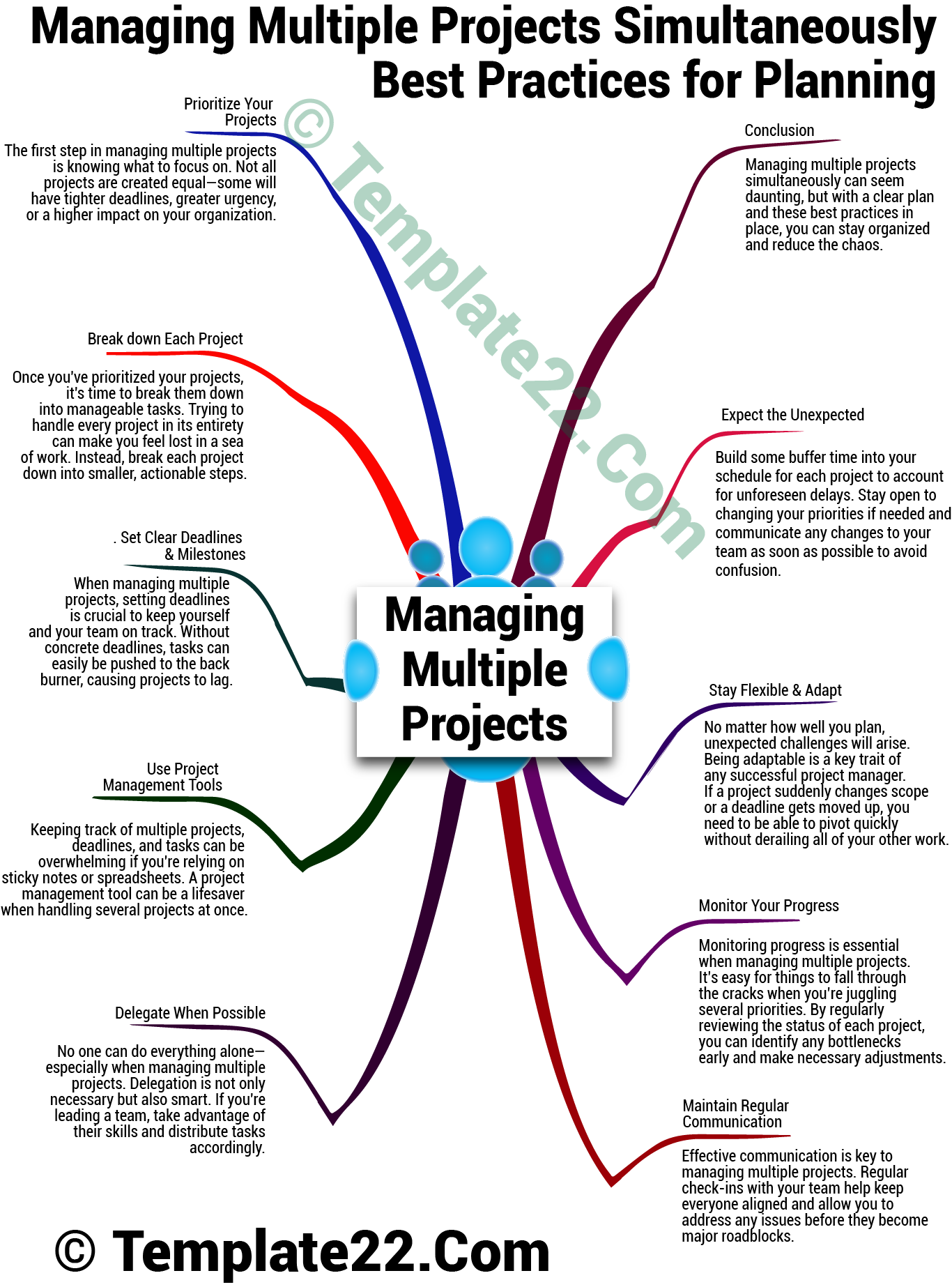 Managing multiple projects simultaneously is a balancing act that requires strategy and focus. With so many moving parts, deadlines, and teams to coordinate, it can be overwhelming without a solid plan. However, with the right approach, you can successfully juggle multiple projects while keeping your sanity intact. In this blog, we’ll explore some of the best practices for planning when managing multiple projects simultaneously, helping you stay organized, reduce stress, and achieve your goals.
Managing multiple projects simultaneously is a balancing act that requires strategy and focus. With so many moving parts, deadlines, and teams to coordinate, it can be overwhelming without a solid plan. However, with the right approach, you can successfully juggle multiple projects while keeping your sanity intact. In this blog, we’ll explore some of the best practices for planning when managing multiple projects simultaneously, helping you stay organized, reduce stress, and achieve your goals.
1. Prioritize Your Projects
The first step in managing multiple projects is knowing what to focus on. Not all projects are created equal—some will have tighter deadlines, greater urgency, or a higher impact on your organization. To keep things under control, it’s important to prioritize your projects.
How to Prioritize
Start by listing your current projects and evaluating their importance based on deadlines, complexity, and strategic value. Use a system such as the Eisenhower Matrix, which separates tasks into categories like urgent, important, and less critical. This will give you a clear overview of what needs your immediate attention versus what can be scheduled for later.
2. Break Down Each Project
Once you’ve prioritized your projects, it’s time to break them down into manageable tasks. Trying to handle every project in its entirety can make you feel lost in a sea of work. Instead, break each project down into smaller, actionable steps.
Create Task Lists
For each project, create a task list that outlines every step needed to complete it. Be specific—rather than writing “work on the website redesign,” break it down into smaller tasks like “choose website theme,” “design homepage layout,” and “write content for the ‘About Us’ page.” This approach not only makes the workload feel more manageable but also helps you track progress more easily.
3. Set Clear Deadlines and Milestones
When managing multiple projects, setting deadlines is crucial to keep yourself and your team on track. Without concrete deadlines, tasks can easily be pushed to the back burner, causing projects to lag.
CLICK HERE TO DOWNLOAD 300+ PROJECT MANAGEMENT TEMPLATES & DOCUMENTS IN EXCEL
Establish Milestones
For larger projects, establish milestones that act as checkpoints. This ensures that you’re progressing at the right pace without waiting until the final deadline. Use these milestones to measure your progress and make adjustments where needed. Additionally, share these milestones with your team so everyone knows what needs to be done and by when.
4. Use Project Management Tools
Keeping track of multiple projects, deadlines, and tasks can be overwhelming if you’re relying on sticky notes or spreadsheets. A project management tool can be a lifesaver when handling several projects at once.
Popular Tools to Consider
Tools like Trello, Asana, or Monday.com help you organize your tasks, assign responsibilities, and monitor progress in real time. You can create separate boards or task lists for each project and easily drag and drop tasks as they progress. The ability to set due dates, attach files, and communicate with team members within the platform streamlines the entire process and ensures everyone stays on the same page.
5. Delegate When Possible
No one can do everything alone—especially when managing multiple projects. Delegation is not only necessary but also smart. If you’re leading a team, take advantage of their skills and distribute tasks accordingly.
Smart Delegation Tips
Start by identifying tasks that don’t necessarily need your attention. Routine or repetitive tasks can often be handled by others, freeing up your time for higher-priority work. When delegating, be clear about your expectations, deadlines, and the level of quality required. Check in regularly, but avoid micromanaging—trust your team to do their part.
6. Maintain Regular Communication
Effective communication is key to managing multiple projects. Regular check-ins with your team help keep everyone aligned and allow you to address any issues before they become major roadblocks.
Establish Communication Channels
Decide on a communication structure that works best for your team. You might prefer weekly meetings for general updates and daily quick check-ins for more urgent matters. Using communication tools like Slack or Microsoft Teams ensures that everyone has a way to stay connected without crowding their inbox with endless emails.
7. Monitor Your Progress
Monitoring progress is essential when managing multiple projects. It’s easy for things to fall through the cracks when you’re juggling several priorities. By regularly reviewing the status of each project, you can identify any bottlenecks early and make necessary adjustments.
How to Stay on Track
Set aside time at the end of each week to review your progress. Are you meeting your deadlines? Is any project falling behind? Are there any recurring issues? Tracking progress not only keeps you accountable but also allows you to make informed decisions about where to allocate your time and resources.
CLICK HERE TO DOWNLOAD 300+ PROJECT MANAGEMENT TEMPLATES & DOCUMENTS IN EXCEL
8. Stay Flexible and Adapt
No matter how well you plan, unexpected challenges will arise. Being adaptable is a key trait of any successful project manager. If a project suddenly changes scope or a deadline gets moved up, you need to be able to pivot quickly without derailing all of your other work.
Expect the Unexpected
Build some buffer time into your schedule for each project to account for unforeseen delays. Stay open to changing your priorities if needed and communicate any changes to your team as soon as possible to avoid confusion.
Conclusion
Managing multiple projects simultaneously can seem daunting, but with a clear plan and these best practices in place, you can stay organized and reduce the chaos. Prioritizing tasks, using the right tools, delegating, and maintaining strong communication is key to ensuring you meet your deadlines and keep your projects on track. Remember, flexibility is your greatest asset when managing multiple projects—so embrace change, stay proactive, and most importantly, keep planning.
